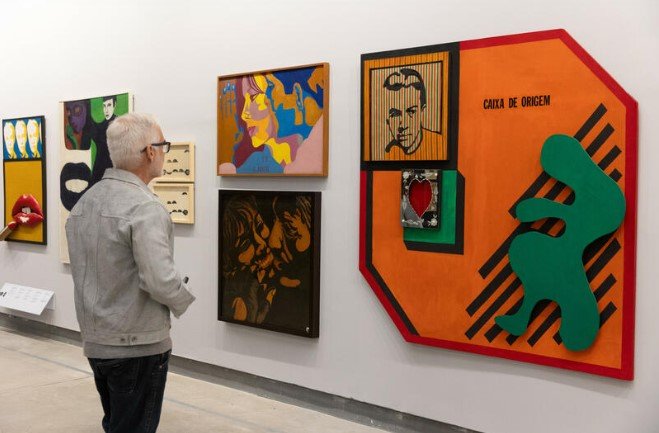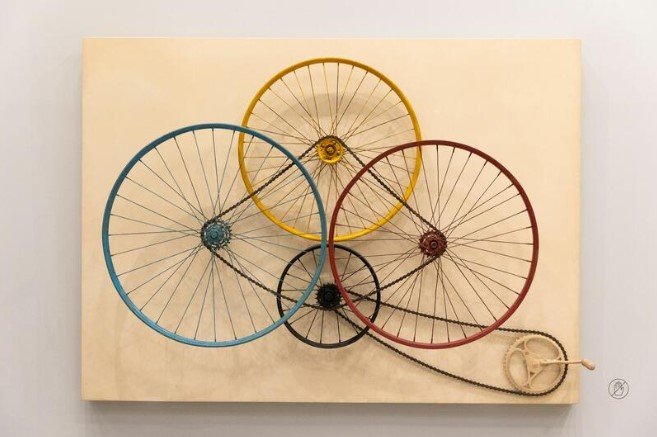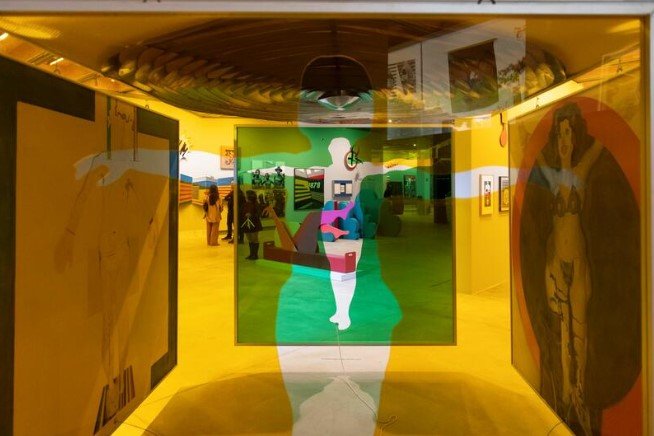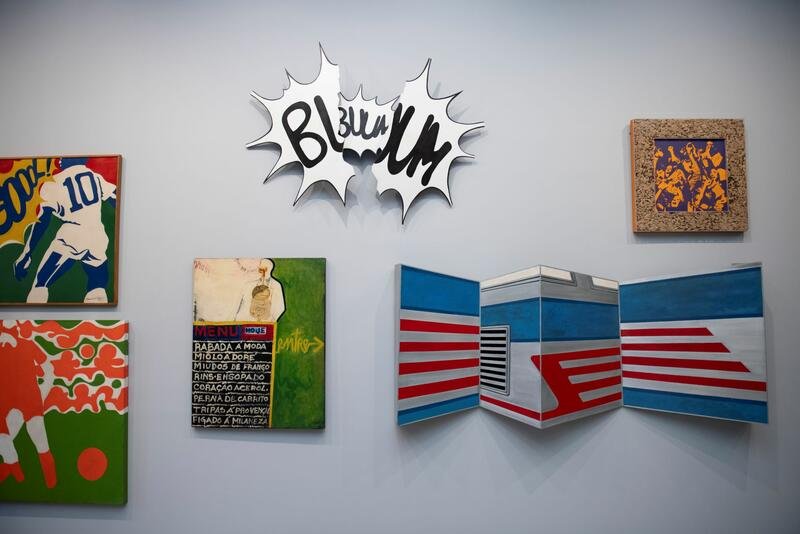In the midst of Brazil’s authoritarian regime and media boom, a generation of artists responded with bold figuration, protest, and reinvention.
“Pop Brazil: Avant-garde and New Figuration, 1960–70,” now on view at the Pinacoteca de São Paulo, offers a compelling reflection on how pop aesthetics were adapted, resisted, and transformed across a politically turbulent decade.
Featuring 250 works by over 100 artists — many shown together for the first time — the exhibition challenges dominant narratives of pop art by repositioning it within the Brazilian context of censorship, mass media, and emerging cultural industries.

A counter-pop vision shaped by dictatorship and mass media
Curated by Pollyana Quintella and Yuri Quevedo, the exhibition is organized into thematic sections that span the rise of the television age, political unrest under the military regime, and the reshaping of public space through street-based actions and happenings.
Unlike the consumerist exuberance of American pop art, Brazilian pop was often fueled by irony, critique, and a desire to democratize visual culture.
Highlighting voices of resistance and cultural hybridism
The show foregrounds iconic and lesser-known figures such as Wanda Pimentel, Antonio Dias, and Romanita Disconzi. Visitors are invited to interact with Hélio Oiticica’s parangolés and explore works addressing the rise of TV music festivals, the Cold War’s space race, and the subversive power of vernacular imagery. Claudia Andujar’s portraits, Nelson Leirner’s altars to Roberto Carlos, and Claudio Tozzi’s astronauts and countercultural icons all point to a politically charged reinterpretation of pop.

Reclaiming the street: collective gestures in a repressive era
One of the exhibition’s entry points is the Happening das Bandeiras (1968), a seminal street action that gathered artists such as Anna Maria Maiolino and Flávio Motta in Ipanema’s General Osório Square. This moment, and others like it, reflected a shift toward accessible, non-institutional spaces for visual expression—an ethos that still informs contemporary Brazilian art.
A legacy that shapes today’s cultural discourse
As curators note, the exhibition revisits “a historical moment that still resonates in our daily lives,” underlining how the aesthetics of resistance helped define the contours of contemporary Brazilian art. With its colorful tensions and urgent themes, “Pop Brazil” emerges as a vital contribution to global conversations on visual culture, art under pressure, and the multiplicity of modernities in Latin America.


On view until October 5, 2025, at the Pina Contemporânea (Gran Galería), São Paulo.
Further reading: play and inspiration in contemporary art
The exploration of mass media, visual icons, and everyday objects in Pop Brazil resonates with broader contemporary practices that blur the boundaries between art, design, and play. For a closer look at how artists today engage with similar themes of appropriation and imagination, we invite you to read our feature on the creative use of art cards as inspiration: Playing with Art Cards as Inspiration in the Works of Four Talented Artists.
Pop sensibilities in today’s artistic practices
The legacy of pop culture as a tool for critical reflection continues to shape the work of contemporary artists across the globe. If you’re interested in how pop aesthetics evolve in today’s context of digital culture, soft power, and playful critique, don’t miss this in-depth piece on artist Gerónimo Araquistain: The Era of the Plush – Gerónimo Araquistain and the Power of Pop.


